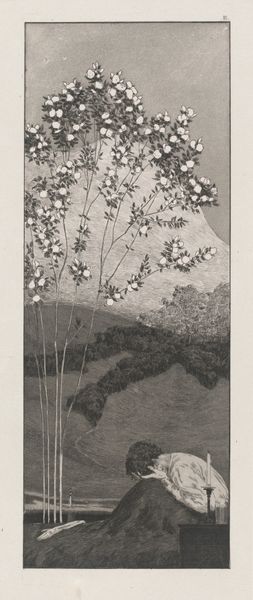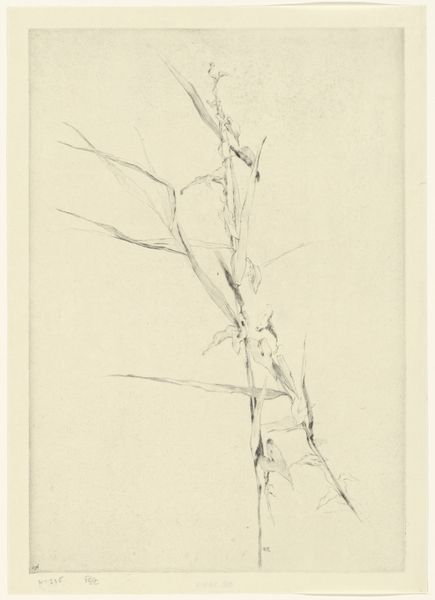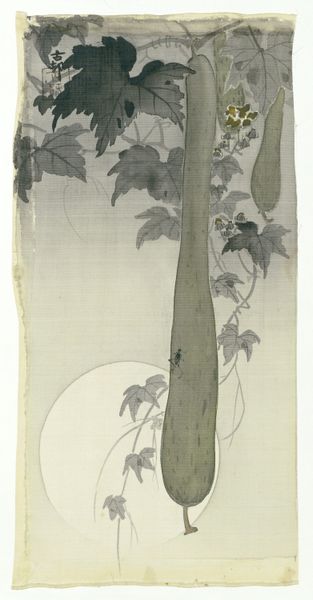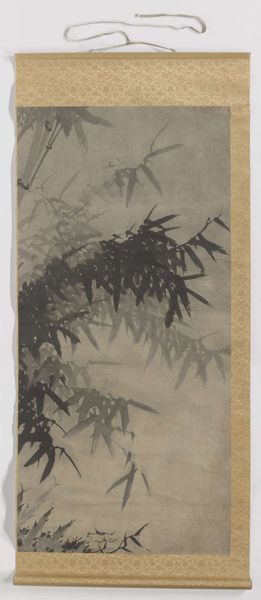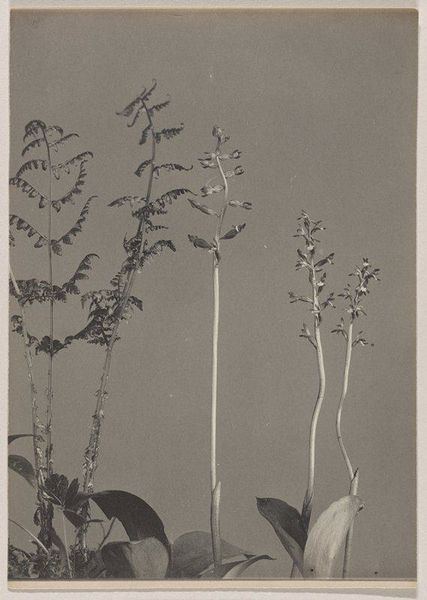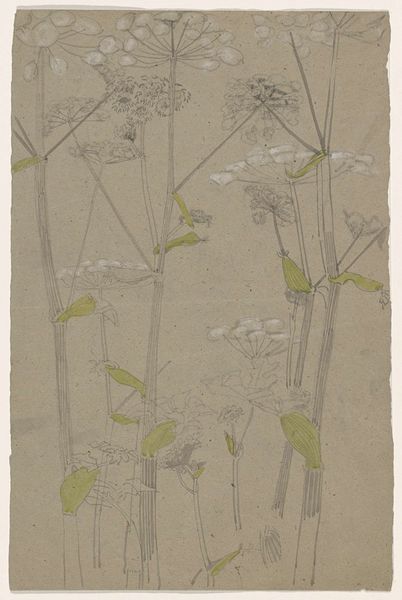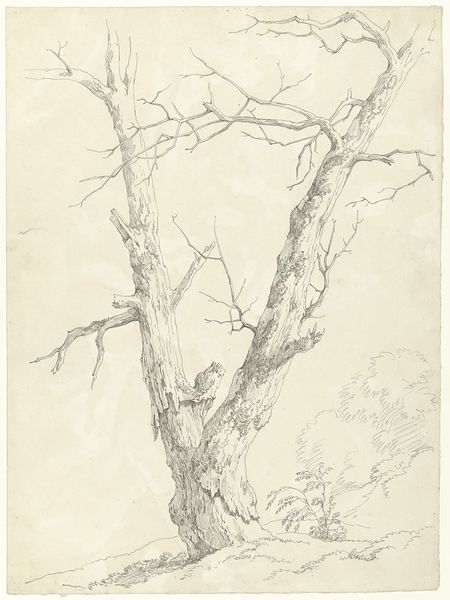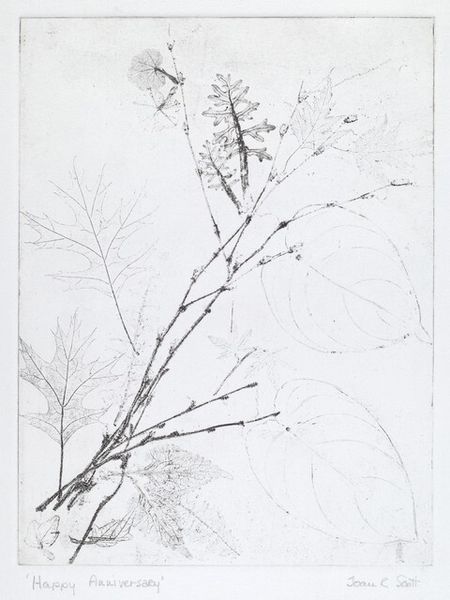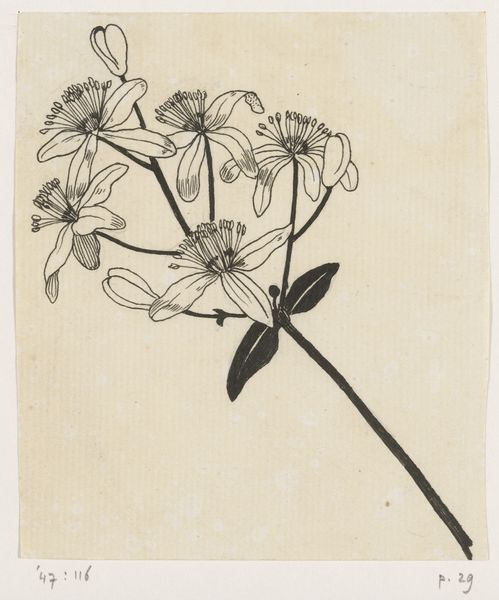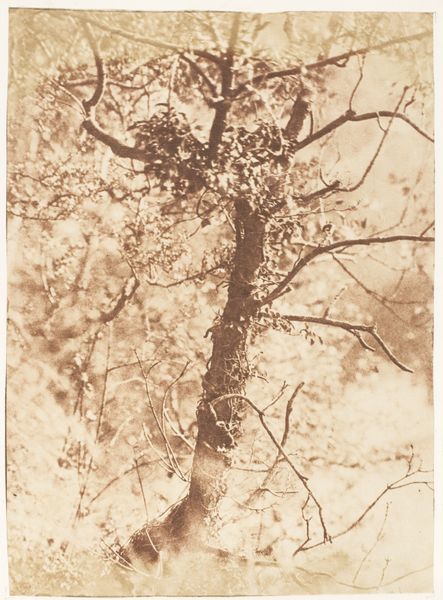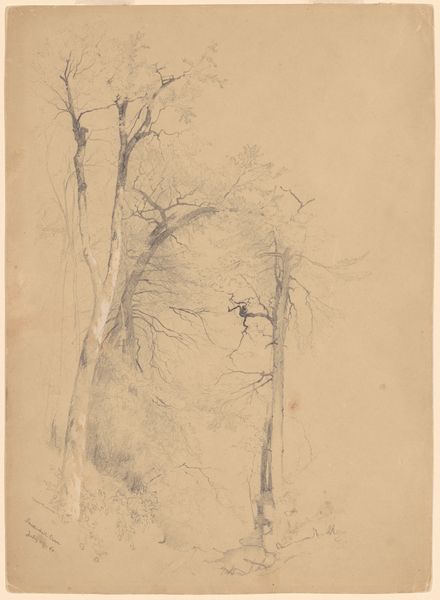
Dimensions: height 344 mm, width 188 mm
Copyright: Rijks Museum: Open Domain
Curator: Ah, yes, here we have Ohara Koson's "Staartmees in storm", made sometime between 1900 and 1936. It’s a woodblock print, a striking example of *ukiyo-e*, now residing here at the Rijksmuseum. Editor: Well, it’s immediately striking. You can almost *feel* the wind whipping around this tiny bird. The monochromatic scheme really amps up the drama, doesn’t it? Like a whispered secret in the greyscale. Curator: Exactly. Let's delve into what makes woodblock prints such amazing documents of process. The labor…all the hand carving…the layering. Each line has to be methodically and deliberately created. Editor: I imagine Koson had an intense, almost symbiotic relationship with the materials – the wood, the paper, the ink. I wonder what kind of wood he favoured...cherry, maybe? And who were the artisans that produced and then distributed his prints, these commodities depicting nature for consumption. Curator: The scene itself has an almost cinematic feel, doesn't it? The ginkgo leaves look almost like hands reaching out in the gale. There's this powerful juxtaposition of the fragile bird against the turbulent storm. To me, it evokes resilience, finding beauty in the midst of chaos. What do you think? Editor: I'm not sure about beauty precisely, but I think what comes across most of all is an attempt to convey natural instability and chaos. One imagines what working in that printing house might have been like with the raw materials, not simply the refined beauty presented in the product. Curator: But even in mass production, the artist retains the creative flair in production. In Asian art traditions, nature is often seen as a source of wisdom and guidance. Perhaps Koson is urging us to find our own balance in the storms of life? Editor: Or simply reflecting how cheap mass-produced material allowed artists to reach audiences broader than those interested in high art. The political economy behind such production, the cheap distribution afforded through prints and woodcuts. Curator: Ultimately, I think, whatever one's perspective, this piece is evocative in its depiction of that contrast, offering a moment of peace, and reflection in this storm of print-making. Editor: Yes, that contrast – between raw material and serene scene– provides endless avenues for speculation. I find that deeply rewarding.
Comments
No comments
Be the first to comment and join the conversation on the ultimate creative platform.

